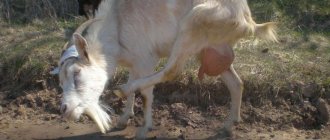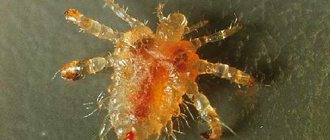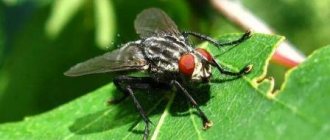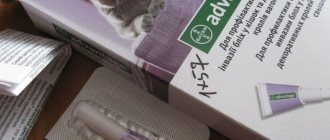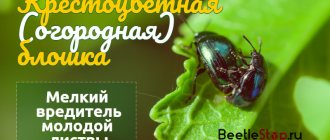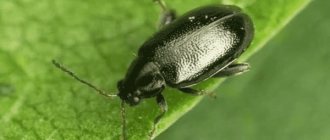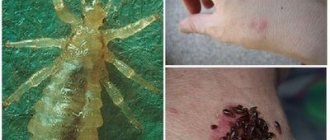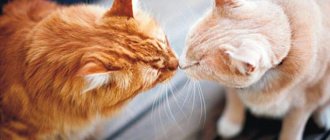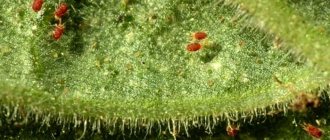Sometimes farmers notice that rabbits have a wet face. This is a symptom of infectious stomatitis. Most often, young rabbits are exposed to this ailment. Owner carelessness and lack of treatment can be fatal. To protect livestock from death and prevent the development of stomatitis, you should know the symptoms and methods of treating the disease.
Causes of the disease
Woodlice, woodlice or wet muzzle is the popular name for viral stomatitis, that is, inflammation of the mucous membrane of the mouth and tongue of rabbits. The disease is characterized by excessive salivation. A sick rabbit has constantly wet fur around its mouth. The virus actively develops in the animal’s saliva, as well as in its blood and urine. One sick rabbit can infect the entire population. Infected animals must be immediately isolated, that is, transplanted into a separate cage.
Stomatitis most often occurs in young rabbits, 1-3 months old. Young animals get sick with woodlice when the animals are transferred from the female rabbit and transferred to independent feeding. In all likelihood, stomatitis is the body’s reaction to new green food. During this period, rabbits should be given dried hay, crushed dry grain, clean root vegetables and vegetables.
Nutritional errors lead to stomatitis. At first, the virus is picked up by weakened rabbits that are poorly fed, but after 1-2 weeks the infection affects the entire population.
The cause of the disease is infection. The virus can be found in dirty food and water, in cages and on equipment, and carried by rodents. Stomatitis develops in a humid, hot, stuffy environment. Rabbits get sick if their cages are rarely cleaned. The virus also affects adult rabbits weakened by frequent births. The disease occurs at any time of the year, but in spring and autumn there are more cases of death.
P.S.
In conclusion, I would like to remind you once again that attacks of viral stomatitis become more frequent when young rabbits appear on your farm; they are especially intensified during periods of stress, as the immune system noticeably weakens. For example, in extreme heat, a period of prolonged rains leading to increased air humidity, or, conversely, prolonged drought and stuffiness. And temperature changes have a negative impact on the general condition of rabbits. If we add to this periods of stress from possible transportation, moving from cage to cage, changing feeding from mother's milk to regular food, drinking, deworming and banal fights, then it would not be superfluous to once again check the rabbit's tongue, take a closer look to see if he is salivating , is your face wet? That's all. I hope that thanks to this article, you have learned something useful for yourself and will not let viral infectious stomatitis run rampant in your household.
Please share this article with your friends on social networks:
Please rate the article. Ask a question, discuss on the forum.
Symptoms of a wet face
The incubation period of the viral disease lasts only 2-4 days. Sick rabbits have decreased appetite. The mucous membrane of the mouth and tongue turns red. Then the oral cavity becomes covered with white spots. Soon the affected areas change color and become yellow, then brown. Erosion and ulcers occur on the mucous membranes of the tongue, gums, and lips.
Infected animals have increased salivation. Saliva flows from the corners of the mouth. Around the muzzle and on the chest there is constantly wet and stuck together hair. Hair falls out on the lower jaw and pustules form. A sick animal diarrhea, refuses food, sits motionless, and quickly loses weight. The disease lasts about 10-14 days. Most often, rabbits suffer from a mild form of stomatitis, and then recover.
In animals with weak immunity, severe disease occurs and they die within 3-5 days. The mortality rate of young animals is 20-70 percent. It is recommended to treat sick rabbits.
See also
How to train and play with a rabbit, rules of education at homeRead
Preparing plant materials for the winter
In spring and summer, birds get a lot of vitamins from greens and vegetables from the garden. In winter, poultry's immunity weakens. To support it, you need to harvest forbs for future use. Plants are harvested in the spring, when they contain the most useful substances.
The collected stems and leaves are laid out in a thin layer in the shade under a canopy, covered with a layer of gauze and dried for several days. The blanks are placed in canvas or paper bags and stored in a dry, well-ventilated place. In winter, dried greens, including dandelions, are added to wet mash.
Dried dandelions for chickens
Forms of the disease, danger to animals and humans
Stomatitis, if left untreated and without any sanitary measures, can lead to the death of young rabbits. If animals are not treated, the strongest ones may survive, but then they will lag behind in development.
More often, small rabbits die from stomatitis. In adults, the mortality rate is low. The virus is not dangerous to humans, but it is not recommended to eat the meat of rabbits that have died from stomatitis. If an animal has been ill and recovered, it can be fattened and then (after a few months) sent for slaughter. The meat of recovered rabbits can be eaten after heat treatment.
Forms of the disease:
- initial (mild) - the appearance of redness on the oral mucosa, then white plaque, brownish spots, slight drooling;
- acute (severe) - formation of erosions and ulcers, increased salivation, diarrhea, lack of appetite;
- atypical - slight salivation, warm nose.
The initial stage lasts about 10 days, and then it gradually turns into an acute stage (another 5-7 days). The symptoms are getting worse every day: the animal is inactive, diarrhea, does not eat anything, and without treatment may die.
Expert opinion
Zarechny Maxim Valerievich
Agronomist with 12 years of experience. Our best country expert.
Ask a Question
Important! Adults can get an atypical form of the disease. Stomatitis in this case lasts 3-4 days and goes away on its own, without treatment.
Features of feeding
In any case, it is necessary to follow a well-constructed scheme for caring for animals, provide them with proper living conditions and be prepared to feed the livestock.
Under natural conditions, rabbits obtain their food by grazing in meadows. The gastrointestinal tract of these animals is adapted for the constant process of digestion. In the absence of nutritious food and fresh grass, individuals begin to lose weight and become ill. In this regard, when keeping rabbits, the basis of their diet should be a variety of fresh, juicy herbs. It is best to use wild herbs instead of store-bought mixes.
The optimal diet consists of the following herbs: burdock, clover and dandelion. However, you should be careful with some types of plants. For example, you can safely give only young shoots of quinoa and in small quantities. Increasing the percentage of quinoa in the diet can lead to hyperdevelopment of intestinal microflora, which will lead to bloating and disruption of digestive processes.
Currently, there is conflicting evidence about the possibility of including some wild herbs in the diet. One of them is milkweed.
Feeding milkweed to rabbits
Euphorbia, or Euphorbia, belongs to one of the most numerous genera of the plant world. It has over 2000 plant species. Among them there are both herbaceous forms, shrubs and trees. Approximately 160 species are distributed on the territory of the Russian Federation.
Safety measures when an infection is detected
The behavior of rabbits must be constantly monitored. If an animal refuses food, is inactive, or has excessive drooling, it should be placed in an isolation ward. This is a special cage that is located in another room. The infected animal must live for some time (30-40 days) away from other rabbits.
It is recommended to feed patients with soft food during quarantine. The animals are given alfalfa hay, sprouted grains of wheat and barley, pumpkin, carrots, and water. Only a veterinarian can diagnose sick rabbits. Viral stomatitis lasts at least 10 days. Previously, this disease does not go away, even if treatment is started.
Prevention
To prevent wet faces in baby rabbits, you need to regularly carry out preventive measures:
- disinfection, disinfestation, deratization of the premises where the animals live;
- vaccination according to the vaccination schedule;
- feeding pets with vitamin supplements;
- add 1 teaspoon of iodine per 10 liters of water to the rabbits’ drink;
- animals that have recovered or are suspicious are kept in quarantine for two weeks, the same applies to newly arrived rabbits.
A wet muzzle in rabbits is one of the main signs of stomatitis, which is accompanied by profuse salivation. If you notice matted fur and a wet face, you should consult a veterinarian. In most cases, timely treatment significantly increases the chances of a favorable outcome for sick pets.
How to treat stomatitis in rabbits
If excessive salivation is detected, rabbits can be given pure streptocide. Dose: pour 0.2 grams of powder into the mouth once a day, repeat the procedure every other day. The medicine can be purchased at a veterinary pharmacy. It should be a powder, not tablets. Streptocide does not cure the virus, but it alleviates the animal’s condition. To increase immunity, rabbits can be injected with immunocorrectors (Gamavit, Katazol).
Antibiotics
It is advisable to treat infectious stomatitis with an antibiotic. Rabbits react poorly to the penicillin group. Veterinarians usually prescribe Baytril or Biomycin. Injections are given in the back thigh (middle part). "Baytril" 2.5 percent is prescribed to babies from 30 days of age. Dose: 0.2 ml per 1 kg of weight, once a day. The course of treatment is 5 days. You can dilute 1 ml of the drug in 1 liter of water and irrigate the oral cavity with this solution using a syringe once a day. Tetracycline can be used to syring the mucous membrane. Dissolve 1-2 tablets in 1 liter of water. The oral cavity is irrigated once a day until the symptoms disappear completely.
Important! After antibiotic use, it is recommended to give rabbits probiotics to improve intestinal microflora (Olin).
You can buy Tetracycline ointment and use it to treat the surface around the nose and mouth. For the treatment of stomatitis, “Travmatin”, “Traumel”, “Liarsin” are used. These are not antibiotics, but anti-inflammatory drugs. Before using them, you should consult your veterinarian.
See also
Description and characteristics of Vienna Blue rabbits, care rulesRead
Important! Animals should not be given all available medications for stomatitis. Rabbits are treated with one remedy. The injection and irrigation of the oral cavity are done once a day, not more often. The illness will last at least 10 days. The speed of recovery is not affected by any medications.
Folk remedies
When stomatitis is detected, it is customary to rinse the oral cavity. Most often, a weak pink solution of potassium permanganate is used. Mouth ulcers can be lubricated with Lugol with glycerin. The procedure is carried out no more than once a day, for 5-10 days in a row, until the inflammation completely disappears. Sick animals, instead of water, can be given a decoction of chamomile, calendula, sage, and oak bark. A propolis solution is used to irrigate the oral cavity. It is recommended to keep sick animals clean.
What should not be in the diet: prohibited foods
Due to their undeveloped stomach muscles and very long intestines, rabbits must always be provided with sufficient food. Each new portion of food pushes what was previously eaten through the intestines. To avoid stagnation, the rabbit must constantly eat something. However, it is also impossible to overfeed animals, and if there is often food left in the feeders, then the amount of food consumed should be reduced.
Not all grass is good for rabbits.
Rabbits have a very fast metabolism, so they eat a lot. But not every food is healthy. There are some foods that can be extremely dangerous for them. So what should you not feed rabbits? Let's try to figure it out.
Vegetables and fruits
Rabbits love succulent food, which includes vegetables and fruits. But they should not make up more than a third of the total daily diet. An excess of such feed can lead to bloating, disruption of the stomach and intestines, and in some cases, the death of the animal.
Be careful when feeding rabbits dried vegetables in winter. They swell in the stomach, which can lead to intestinal blockage.
Do not give boiled, fried or stewed vegetables to rabbits.
As for fruits, the choice is small. Rabbits can only be offered dried apples and pears, in small quantities and not often. Moreover, it is better to dry them yourself, after removing the core. Under no circumstances should rabbits be fed any exotic fruits.
You should not give fresh berries to rabbits, they cause fermentation in the intestines.
Plants
The rabbit's diet should contain three types of green food: medicinal herbs, meadow herbs and garden herbs. Freshly cut, wet grass should not be given. Eating wet grass can cause bloating and diarrhea. To avoid unpleasant consequences, it must be well dried and slightly wilted. To do this, fresh grass is left for several hours in a shady, well-ventilated place. If you cut the grass in dry weather, without dew or rain, then you can do without drying
It is important to know what grass you should not feed rabbits
Branches that are so necessary for healthy teeth and stomach must also be chosen with care. Animals should not be given branches of wild rosemary, apricot, bird cherry, wolf's bast and elderberry.
Limit the consumption of cherry and cherry branches.
Poisonous and dangerous plants:
- horse sorrel;
- aconite;
- quinoa;
- spurge;
- Melissa;
- wild radish;
- digitalis;
- lily of the valley;
- marsh horsetail;
- buttercup;
- sleep-grass;
- celandine;
- henbane;
- nightshade;
- hellebore;
- hemlock;
- lumbago;
- dope.
Milk products
Contrary to popular belief that milk protein is good for animals, this is not the case with rabbits. Only suckling babies need milk before and after vaccination. And for adult rabbits, milk, sour cream, cottage cheese and cheese are prohibited. Protein deficiency can be easily compensated with barley and dry yellow peas (in small quantities).
Rehabilitation of sick animals
Recovered animals can be kept in quarantine for about 30-40 days, and then transferred to a common cage or to the same room with other rabbits. Such animals will no longer become infected with stomatitis. They can be fed with regular food, and when they reach a certain age, they can be sent to slaughter. It is better not to use such animals for breeding. There is a possibility that the offspring may also develop stomatitis.
Composition of the herb and beneficial properties
Woodlice has a rich chemical composition. It is a source of vitamins - retinol, tocopherol, ascorbic acid, as well as vitamin K and B12. All these substances have a beneficial effect on the animal body:
- strengthen the immune system;
- normalize the functioning of the nervous system and digestive organs;
- improve the condition of the fur;
- accelerate metabolic processes, thereby improving the quality of meat.
The herb contains micro- and macroelements - cobalt, potassium, iodine, iron, copper, etc. This plant can be used as food for rabbits to prevent vitamin deficiencies. Woodlice contains substances that enhance milk production in rabbits. The plant has an anti-inflammatory and calming effect. Rabbits are shy animals, so chickweed is beneficial for them.
Woodlice is not a poisonous plant; it can be given to rabbits, but it is important to follow the norm. The diet of rodents should be varied. If you give chickweed to a rabbit, it should be done together with other types of herbs. Rabbits readily eat plants:
Rabbit eats alfalfa
By combining different types of herbs in the animal’s diet, you can avoid the predominance of some substances in the body and the lack of others. The share of woodlice in the composition of forbs should not exceed 10-15%.
Attention! Woodlice has the property of lowering blood pressure and slowing the heart rate, so you should not give rabbits a lot of this herb.
How to protect rabbits from biting midges
Animals will not get sick if they are provided with adequate nutrition from the moment they are separated from their mother and their cages are constantly cleaned and disinfected. The food must be dried. During this period, it is better for rabbits to be given sun-dried hay, clean carrots, pumpkin, and crushed dry grain.
The bedding in the cage needs to be changed daily. It is recommended to clean and ventilate the premises every day, and whitewash them with slaked lime once a month.
The cage should always be dry, but not cramped, stuffy or hot. Rabbits will not get sick if they are dewormed, vaccinated, removed fleas, and boosted immunity with the help of vitamin preparations and immunocorrectors in a timely manner. You can add iodine to drinking water once a week (1 drop per 1 liter). The daily diet should include root vegetables, juicy greens, sun-dried grass, vegetables, grain, mixed feed, and branches.
Preventive actions.
- First, protect the source of infection from healthy offspring.
- Secondly, vaccination of the entire livestock.
- Thirdly, daily inspection and monitoring of the condition of pets.
- Fourth, treat the cells with calcium hydroxide or caustic soda every week to prevent the spread of microbes.
- Fifthly, when feeding, drip iodine or potassium permanganate ½ mg per liter of liquid into the water.
After two weeks, with the right systematic approach, the disease should recede. The rodents will be absolutely healthy, their meat and skins are suitable for use.
Educational information about measures to combat the contagious virus can be emphasized from the video. In the video, based on personal experience, recommendations and recipes for the treatment of stomatitis are given.
Regardless of where the source of infection originated, it is necessary to immediately take all possible treatment and preventive measures. Timely and clear actions will allow you to minimize losses, and perhaps do without them altogether.
